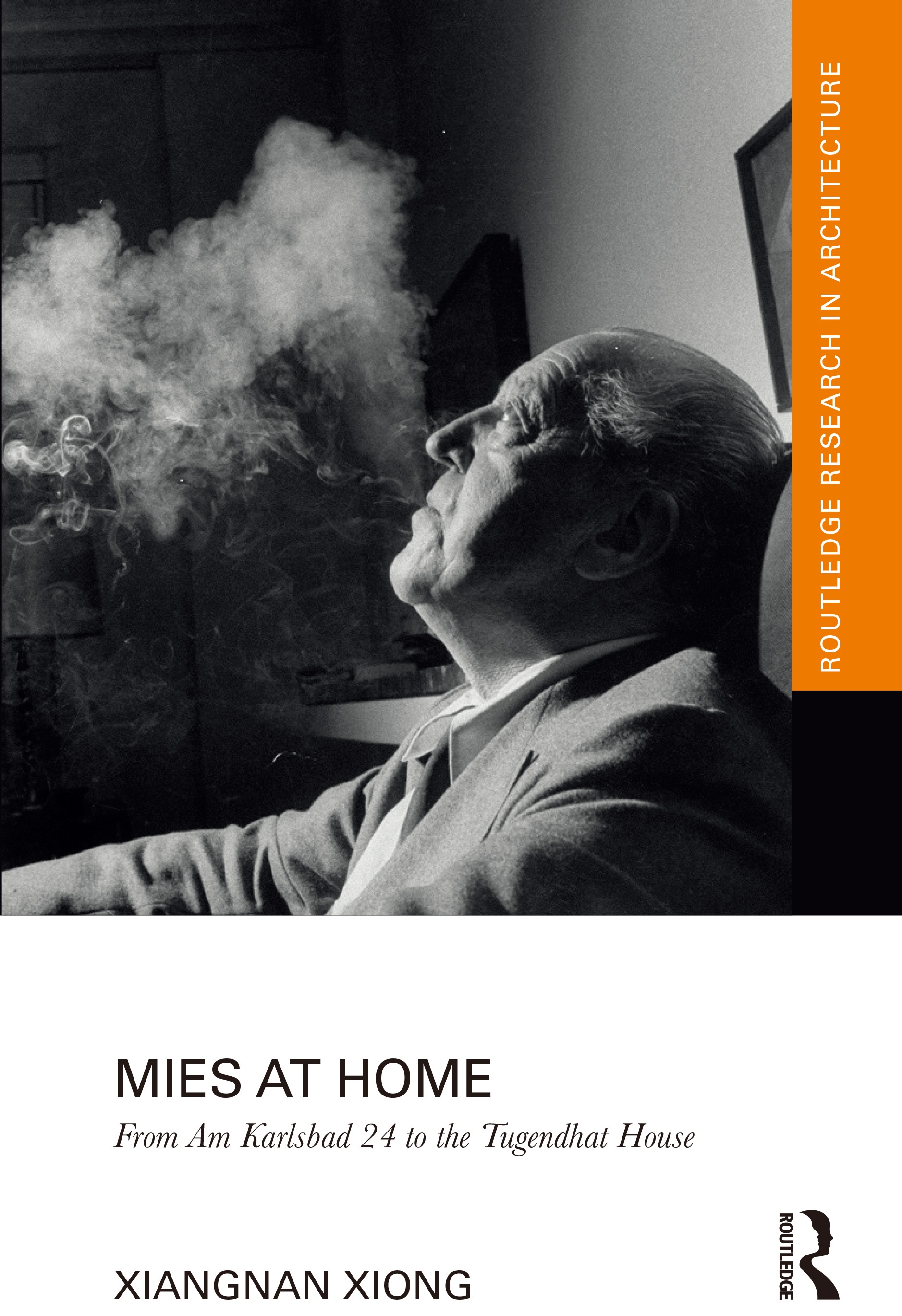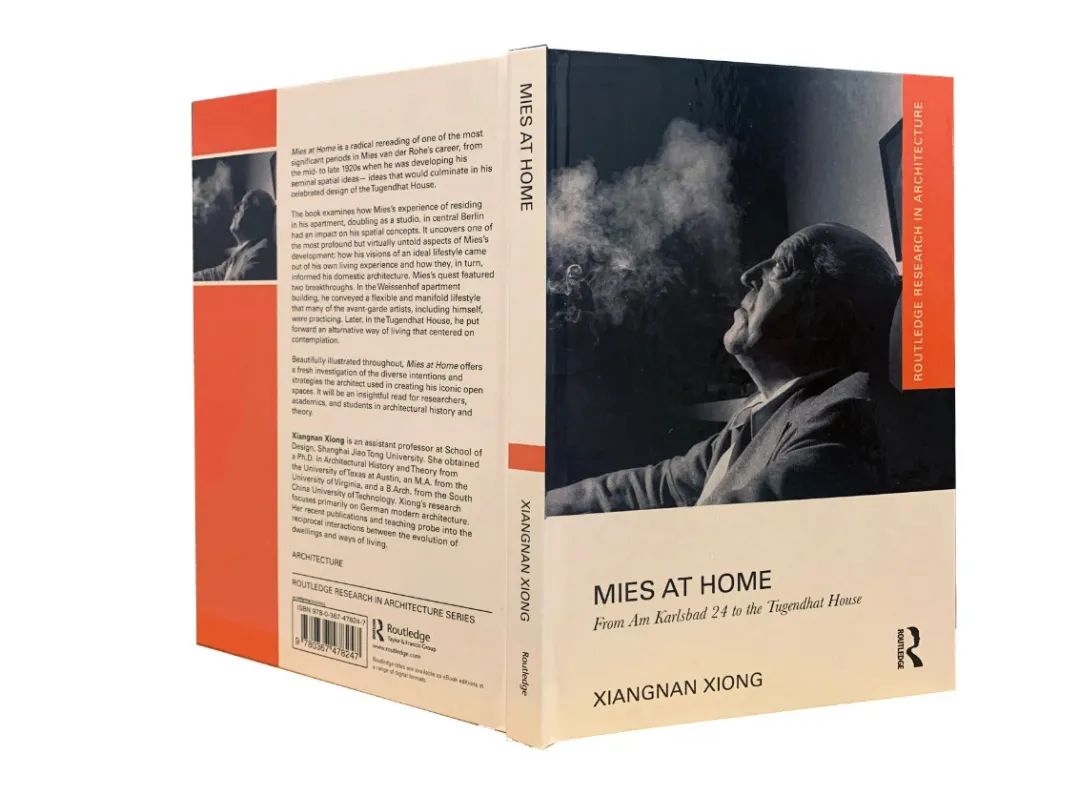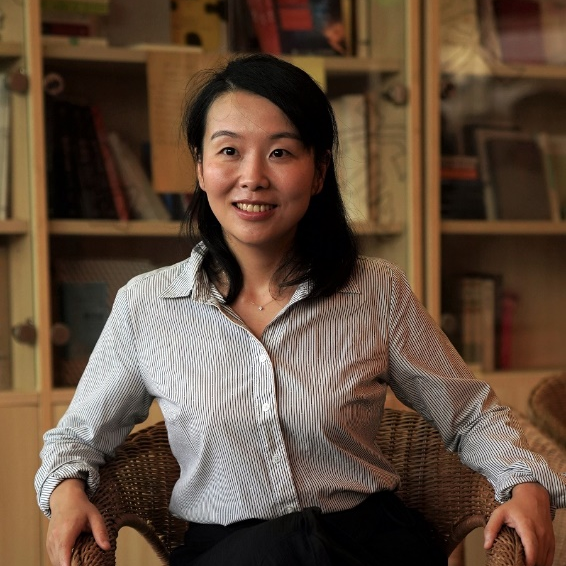
“寻常事物包含最深的玄机.” Robin Evans的话或许有夸大其词之嫌,但用来描述某些建筑师却显得格外贴切——他们从最日常的生活中提炼出设计思路,指导他们的作品。建筑师密斯凡德罗亦是其中一员。我院助理教授熊庠楠著作的新书《密斯在家》/Mies at Home : From am Karlsbad 24 to the Tugendhat House (London and New York: Routledge, 2022) 讲述的正是这样一段发展历史。该书聚焦于密斯职业生涯中短暂而关键的时段——1920年代;其间,密斯的建筑思想转型,作品随之转变。通过对照分析密斯的阅读和写作,作者将密斯定位于当时德语世界的知识文化圈的思想网络中,并揭示密斯的设计核心在于创造新的生活方式。该论点挑战了密斯建筑核心是技术的普遍观念。通过梳理密斯的书信、请柬、账单等 (学者们通常视为“琐碎”而忽略的材料),作者重构了密斯在柏林市中心寓所中的日常生活,并论证正是这样的日常体验催化了密斯对现代生活的深刻理解,指导他突破性的设计转型,并由此产生了密斯椅,魏森霍夫住宅展,以及图根哈特别墅等定义了现代建筑和设计的作品。

2019年,在书稿提案阶段,同行评议专家称该书有望成为“密斯研究领域近二十年来最重要的著作。"在出版之际,《密斯在家》收获两位国际专家的高度评价。美国德州大学奥斯汀分校Martin S. Kermacy Centennial讲席教授Christopher Long写道:
“她[作者]的创见——密斯在他柏林公寓里的生活工作方式是其建筑突破的基础——将重新洗牌我们长期对密斯的理解,展现出一个更有趣的密斯。这是一部杰出且重要的学术著作。”
纽约大学Sheldon H. Solow讲席教授Jean-Louis Cohen写道:
“在她原创、富有想象力的研究中,熊庠楠发动了一场哥白尼式的革命:她将密斯关于住宅建筑的新思想归因于他在柏林市中心的公寓。她的重新溯源揭示了密斯的作品中前所未见的规律。往往千遍一律的密斯研究受到了挑战。”
《密斯在家》共六章,分为“密斯居住的世界”(The World Mies Inhabited)和“密斯创造的世界”(The World Mies created) 两部分。“密斯生活的世界”聚焦密斯的思想转型及促其发生的空间环境和文化语境:城市生活体验,他在公寓的日常,以及他所内化的思想图景启发了他对现代生活和建筑的重新认识。“密斯创造的世界”展现了密斯对现代生活的感悟如何指导了他的住宅设计,尤其是魏森霍夫公寓楼和图根哈特别墅。在这些作品中首次采用的设计理念和形态,包括流动空间、开敞空间、室内外的渗透、密斯椅等,已成为今日世界的寻常之事。
从密斯的世界,到我们的世界,相隔百年,相距千里。通过将现代生活体验凝练成新的空间形式,密斯跨越了这距离。《密斯在家》在重新讲述密斯发展的同时,探讨其他现代主义建筑师,包括柯布西耶,鲁道夫·辛德勒和格罗皮乌斯,他们的生活方式和他们的设计之间的关系。以此,作者开启了关于建筑师生活方式的思考——
他们怎样生活;他们向往怎样的生活;这样的体验和想象如何渗透了他们的创造;而他们的创作又如何,在潜移默化中,改变了人们的生活方式。

书评展示
“This proposal—if the promises of the chapters are fulfilled—could be the most important book on Mies since the publications of Mies in Berlin/Mies in America at the turn of the century.”
——同行评议专家(提案阶段)
“Xiangnan Xiong has produced a groundbreaking study of the pivotal moment in Ludwig Mies van der Rohe's career, when he began the exploration of new ideas of space and living that eventually reached their apotheosis in two of his masterworks: the Barcelona Pavilion and the Tugendhat House. Her radical assertion, that Mies's own patterns of living and working in his Berlin apartment were fundamental to his spatial breakthrough of the late 1920s, will doubtless reshuffle long-held assumptions and offer us a new and more interesting Mies. This is a splendid and important work of scholarship.”
——Christopher Long, Martin S. Kermacy Centennial Professor, School of Architecture, University of Texas at Austin, USA.
“In her original, imaginative study of the houses and the apartments Mies van der Rohe has conceived in Europe, Xiangnan Xiong operates a Copernican revolution: she identifies as the source for the emergence of his main ideas about domestic architecture his own home in the center of Berlin. Thanks to this new genealogy, unseen patterns appear in his designs, and the often repetitive Miesian scholarship is challenged.”
——Jean-Louis Cohen, Sheldon H. Solow Professor in the History of Architecture, Institute of Fine Arts, New York University, USA.

熊庠楠
上海交通大学设计学院助理教授
获美国德州大学奥斯汀分校建筑历史与理论博士学位,曾在南方科技大学工作。在国内外重要刊物上独立发表论文十余篇,其中包括英语世界的行业顶刊Journal of Architecture (UK)和JSAH (建筑史学家学会会刊, USA),并合作完成中文译著(德译中)和编著各一部。其首部专著Mies at Home于2022年夏由Routledge (London and New York)出版。